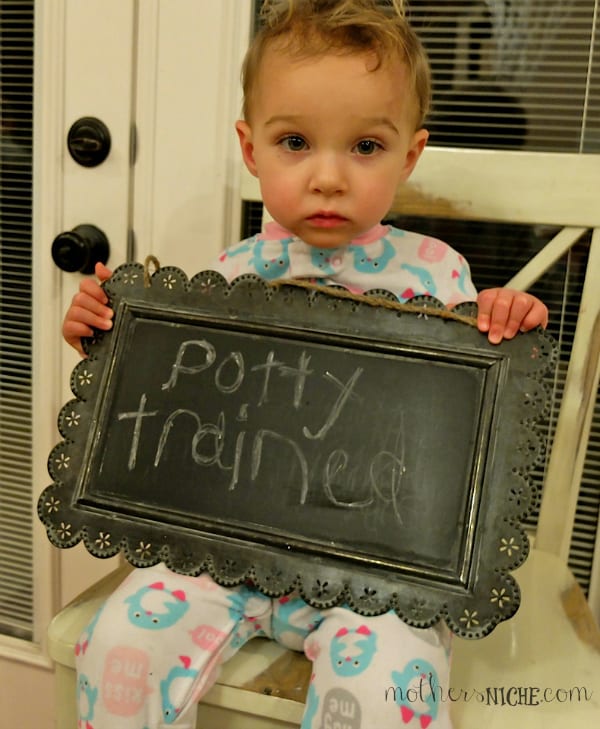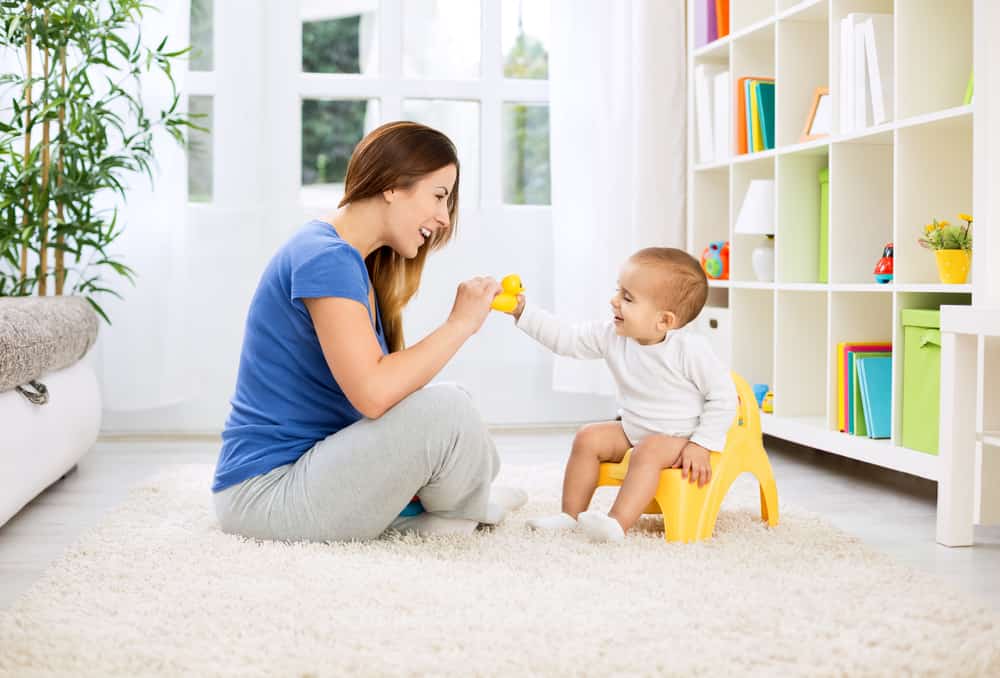It is an amazing milestone and a great relief when your child officially becomes potty trained. Parents may still need to clean up messes from time to time, but it is a great starting point for your child’s independence in the bathroom. Many parents wonder when their child will be potty trained, and the answer is not set in stone. Your child may show the desire to potty train several times during their young lives, and you may not succeed the first time. In this article, we will discuss when you should expect to have a potty-trained child and how you can help your kids succeed in this exciting endeavor. Let’s dive in.
Key Points
- You can expect your child to be potty trained any time between 12 and 30 months of age.
- Some kids take all the way to their fourth birthday, but this is generally the oldest a child will be potty trained.
- Most children will be able to recognize their need to go to the bathroom between 18 and 24 months of age.
At What Point Should You Have a Potty-Trained Child?
There is no set rule for when your toddler will officially be potty trained. It all depends on when your child shows enthusiasm to learn and when they can maintain proper bladder control. According to Johns Hopkins Medicine, you can expect your child to be potty trained any time between 12-30 months of age. Some children are late bloomers, but on average, most kids are potty trained by their fourth birthday at the latest.
It can happen at any time in that range. What is most important is that parents are aware of the signs that their child wants to become potty trained and that they take the right steps to teach their child what to do when they need to use the toilet and how to use it properly.
The Potty Training Process
In order to be receptive to when your child may be ready to be potty trained, it is important to know the process. In general, there are three steps to successful training.
First, your child needs to understand how their bladder works and learn the natural signals that will develop when they need to go to the bathroom. In general, most children will start to understand these skills between 18 and 24 months of age.
Once they hit that milestone, the second step is teaching your child how to use the toilet. In order to do that, your child must be obedient and have the ability to follow instructions. They will need to be able to get up onto the toilet or potty chair, sit comfortably, pull down their pants and underpants, and pull them back up when they’re done.
Finally, your child will need to be willing to use the toilet time and time again once they have learned how to do so. Many children will struggle to go to the bathroom and may have an accident in their underwear. If that happens, keep at it. Your toddler will not be officially potty trained until they can go to the toilet when necessary and do their business every time.
Prerequisites to Using the Toilet
In order to even consider potty training, your child could be able to do the following:
- Walk properly in order to get to the toilet when necessary.
- Know when they have the need to go to the bathroom.
- Control the muscles necessary to sit down and use the toilet.
Signs That Your Child is Ready to be Potty Trained
Even if your child technically has the ability to use the toilet, you must wait for the signs that your toddler is ready to start potty training. Remember that forcing them will not help. They must be ready on their own terms.
Signs that your toddler is ready include:
- Your toddler follows you into the bathroom to see how you use the toilet.
- They come to you when they know that they need their diaper changed or when they are literally about to go to the bathroom.
- The child has a dry diaper for 2 hours or more during the day.
- They are dry after their nap.
- They show clear discomfort when their diaper is full.
- Your child does things on purpose to get praise from you.
- They show signs that they are about to poop or pee, like freezing, squatting, or grunting.
- The child literally asks to use the toilet.
- They ask to wear “big kid” underwear.
- They can undress themselves.
Potty Training Tips

Although your child will want to follow the basic three-step process discussed above, every potty-trained child will have their own journey. However, there are some basic tips that you should consider along the way:
Be A Role Model
Since one of the first steps will be having your child watch you on the toilet, be sure to do it right. Sit properly, use toilet paper, and wash your hands afterward. If you fail to follow one of the steps, then your child will likely do the same.
Stay Positive
Going to the bathroom might be second nature to us, but your child will struggle to achieve the milestone, so stay positive. Cheer them on when they do something right. Also, avoid negative words like “stinky” and “dirty.”
Start with a Potty Chair
Before your child is able to use the toilet, they will likely use a potty chair. Sitting there will allow your toddler’s feet to touch the ground, which is essential for balance. You might also consider some “potty time” toys or books that they can use to make the process easier and give them something to do as they wait to go to the bathroom.
Make it a Routine
Part of learning how to use the potty is getting used to the routine. Take your child to the potty chair at the same time every day. Go there directly when they wake up, after naps, and at night. You don’t want your child to go sporadically, or they may have an incident.
Remind Your Child of the Signs
A potty-trained child will need to know the signs of upcoming urination or a bowel movement. Your child’s face may turn red when they are about to poop, and there may be grunting and squatting. If you see this, then remind them that it is time to go to the bathroom and rush them to the toilet.
Remember That They Won’t Learn Overnight
Patience is absolutely essential during the potty training process. Your child will likely be hesitant at times, but you must stick to the routine and keep up with the training. Some kids may also be used to the idea of mom or dad cleaning them up. They may repeatedly ask you to do so. If they do, stay firm and put your child in charge of their own cleanup. Help them if necessary.
Read Them Books About Using the Toilet
Your child may not grasp what they are doing at first, so extra illustrations may be necessary. Consider reading them fun and educational books about potty training and showing them the pictures so they can gain a further understanding of what must be done.
Buy Them Big-Kid Underwear
Once your child starts to get the hang of potty training and they are getting better at going to the toilet when necessary and actually going pee or poo, you can encourage them to keep it up by getting them big-kid underwear. They will likely be thrilled to hit this next step of their training, and knowing that they will make a mess if they pee their underwear may deter them from doing so.
Teach Proper Hygiene Along the Way
The other major part of potty training your child is helping them understand how to clean themselves properly and wash up afterward. Take time to teach them how to wipe. Teach girls how to spread their legs when wiping and that they should wipe thoroughly from front to back. Then, teach them about the importance of thoroughly washing their hands afterward. Advise them that washing hands is the best way to fight germs.
Move to the Big Toilet When Necessary
After some time having success on their potty chair, they may ask to start using the toilet. When that time comes, give them a stool to brace their feet and see how it goes. It's important to make sure your child is able to safely get on and off the toilet without assistance. They should also be big enough to not fall into the toilet, or at least to get themselves out on their own if they do. Your child will need to be able to use a regular toilet without a potty chair by the time they go to school.
When Potty Training Isn’t Working
Although all parents want a potty-trained child, many kids do have anxiety when they are going through this process, and you may find that they are not yet ready. Consider stopping the training and waiting a few months if you witness the following:
- Your child is having many accidents and isn’t having success going to the bathroom in the toilet.
- The child asks for a diaper when they need to pee or poop.
- Your toddler isn’t getting past the first steps of potty training.
- Your child continues to have accidents in their diaper, and you must constantly remind them to use the bathroom.
- Your child is very fussy about using their potty chair, or outright refuses to use it regardless of what you try.
When Should I Be Concerned?
As we talked about earlier, some children take up to the age of four to learn how to use the potty properly. There isn't really reason to be concerned up until this point. Nonetheless, here are some signs to look out for that could indicate a larger problem with your child:
- They reach the age of three to three and a half and still have no interest in learning how to use the toilet.
- They still lack the ability to tell when they need to use the restroom by four years old.
- They still have accidents beyond the age of four. While accidents can continue until seven or eight years of age, it may be indicative of a problem if your child continues having accidents beyond the age of four.
- Your child suddenly experiences a severe regression in their potty training. For example, if they've been going in the toilet as normal for several months, and then all of a sudden begin refusing to use the toilet or begin having accidents again.
If you experience any of these concerns, or similar ones, it's best to consult a pediatrician. These issues many not be of any concern, but it's better to be safe rather than sorry. Potty training is often a slow process that requires patience, but there comes a time when your child should be able to use the toilet without aid. If this isn't happening, then it's worth it to seek expert advice.
Conclusion
In the end, potty training will not be a process that you will complete overnight. Instead, it will require great patience from you and trial and error from your little one. However, with persistence and encouragement, your child will reach the milestone of using the toilet on their own.
The image featured at the top of this post is ©didesign021/Shutterstock.com.
